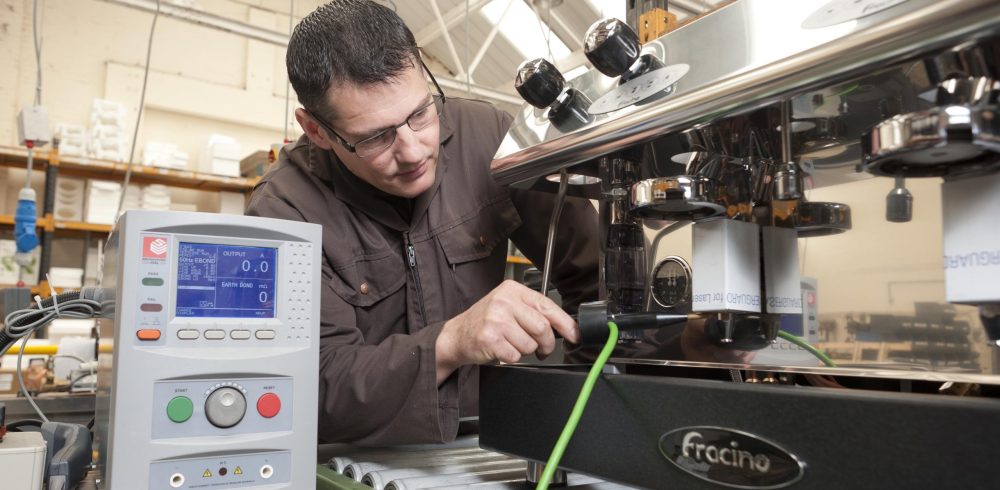Electrical safety testing during manufacturing production is not only critical but also beneficial, says Nathan Barwell, category manager at the Seaward Group.
The importance of electrical safety testing, which is paramount to ensure that powered products rolling off UK production lines are safe and that consumers will not be harmed when they use them, is underpinned by safety requirements such as the Electrical Equipment Regulations in the UK and wider European directives, such as the Low Voltage Directive and product safety standards. These assert that comprehensive testing must be completed on electrical products that are either manufactured or returned for repair. Moreover, properly maintained records of the product design for each manufactured item must also be kept.
Manufacturers will also want to ensure that the many electrical components used in their products comply fully with critical safety requirements, preferably before these are incorporated into finished items, and will therefore carefully check supplied components before or during final product assembly. It is good practice and why they request ‘Certificates of Conformity’ (CofC) from their suppliers as part of the supply chain procurement process.
A comprehensive electrical safety test programme can highlight poor quality or low-grade components and identify areas for manufacturing improvement before products leave the factory gates. This can reap benefits for manufacturers, helping them to reduce costs across the production process as well as those associated with the repair and replacement of expensive ‘out-of-box’ failures.
Better manufacturing processes
By completing the production cycle with comprehensive product testing, significant information can also be gathered and used to improve and refine manufacturing processing and techniques. Identifiable reasons for product failures can be exposed and quickly acted upon. Even simple fault counters can be used to indicate those areas of the build phase that may require further investigation. It can also reduce the likelihood of design re-work and make the whole-time consuming process of recovering failure costs from the supply chain far quicker and easier.
An added dimension of electrical safety testing is the role it plays in delivering a competitive advantage. For instance, this can be built around a company’s capacity to offer full testing during their own production processes, which reduces the need for the customer to carry out their own testing, thus offering a level of added value which can be translated into increased profitability plus extra customer confidence and loyalty.
But what is 100% testing? Firstly, it should be noted that we are talking about electrical safety requirements. Manufacturers will review their own processes for Class I and Class II products and accordingly introduce the three main tests for ensuring product safety: High current Earth Bond measurement, Insulation Resistance measurement and High Voltage Flash (or dielectric strength) Test. In addition, many manufacturers will be driven by standards/customer requirements or even their own in-house guidelines to complete Functional Tests (also known as Run or Load Leakage Testing).
It should also be stated that 100% testing comes in for a degree of criticism, usually based on the increased time and added cost involved. This view needs rectifying. On the time factor, concerns normally arise from misconceptions between type testing requirements and the established practices for 100% routine production line testing. A typical regime of electrical safety testing to meet these routine test requirements can be completed quickly, often within a few seconds.
Advantageous testing
In terms of cost, equipment can be expensive if the type test requirement is to be employed. However, for routine production line testing, there are a number of highly efficient, advanced systems that are readily available and can be used cost effectively to raise quality standards. With simple to use set-up, flexibility and advanced control features, these testers can be readily incorporated into the manufacturing environment without the need for highly skilled labour.
For type testing, a flash test can require high current levels (sometimes in excess of 100mA) and extended test times (several minutes for some standards) and consequently this type of test can require application under closely controlled conditions, involving the use of highly skilled and experienced test personnel.
However, for routine production line testing, electrical safety standards define not only a lower safer trip level, but also the setting up of the test area is well defined to keep safe the operator. Experience has shown that Routine Test Parameters provide a realistic evaluation of electrical safety and does not harm equipment that is designed to comply with the relevant standards for creepage, clearance and insulation properties.
Where delicate electronic components are involved, far from omitting the flash test, various techniques can be incorporated to soft start (ramp) the test voltage, applying DC voltages with discharge circuits. This removes any likelihood of damage occurring – a procedure recognised by many international safety standards.
Far from costing time and money, 100% electrical safety testing on the production line makes sound economic and business sense creating a competitive advantage and peace of mind. After all, only 100% testing can categorically show 100% conformance.
Seaward has produced a free guide to help manufacturers understand better electrical safety testing requirements. This is available at https://www.seaward.com/gb/support/guides/manufacturing/f4c40-electrical-safety-testing-during-manufacture-a-practical-guide/?gmsource=PR















